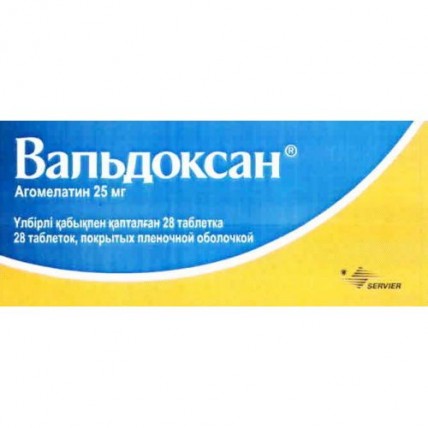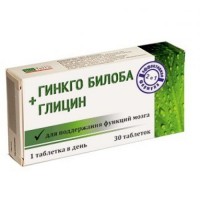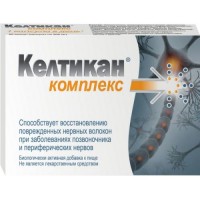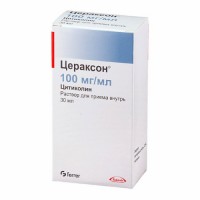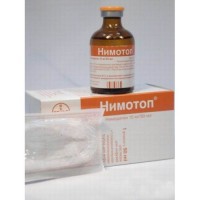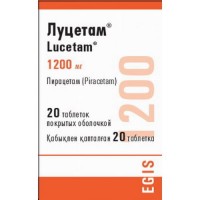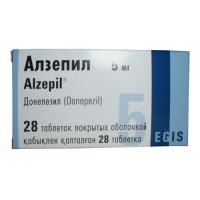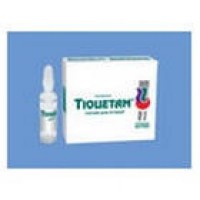Valdoxan® (Agomelatine) 25 mg, 28 tablets
- $87.40
Valdoxan® (Agomelatine) is used in the treatment of depression or to help prevent depression returning, and is only available with a doctor's prescription. The symptoms of depression vary from one person to another, but commonly include persistent sadness, loss of interest in favourite activities, feelings of worthlessness, sleep problems, feeling of being slowed down, feelings of anxiety or changes in appetite and weight. Changes in your daily sleep and appetite patterns are examples of disturbances of your 'body clock' that occur commonly in depression.
Common brand names: Agomelatine, Alodil, Agoprex, Inspago, Melitor, Thymanax, Valdoxane, Vestin
One tablet contains the active ingredient: agomelatine 25 mg
Major depressive disorder
Recommended dose: inside, 25 mg (1 tablet) 1 time per day, before bedtime.
If necessary, after two weeks of treatment, the dose can be increased to 50 mg (2 tablets) once a day.
The maximum daily dose of the drug is 50 mg.
When deciding to increase the dose, one should take into account the increased risk of an increase in the content of transaminases. Any dose increase of 50 mg should be carried out taking into account the benefit / risk ratio, individual for each patient, and with constant monitoring of hepatic function.
Before starting treatment, tests should be performed to check liver function, then at intervals: after 3 weeks, 6 weeks (end of the acute phase), 12 weeks, 24 weeks and then according to clinical indications. When increasing the dose, also check the liver function at the same frequency as at the beginning of treatment.
The duration of treatment is at least 6 months after the end of the episode of depression.
Discontinuation of treatment does not require a gradual dose reduction.
Elderly patients:
The efficacy and safety of agomelatine (25 to 50 mg / day) has been established in elderly patients (<75 years). The effect was not observed in patients ≥ 75 years of age, therefore, agomelatine should not be prescribed to patients in this age group. No dose adjustment depending on age is required.
Patients with impaired renal function:
When prescribing Valdoxan®, patients with moderate or severe renal impairment should be careful due to limited clinical data.
Very often (≥1 / 10), often (≥1 / 100, <1/10), infrequently (≥1 / 1000, <1/100), rarely (≥1 / 10000, <1/1000), very rare (<1/10000), the incidence has not been established (it is not possible to estimate the incidence based on the available data).
Often
- headache, dizziness, drowsiness, insomnia, migraine, anxiety
- nausea, vomiting, constipation, abdominal pain, increased levels of transaminases AST and / or ALT, diarrhea
- hyperhidrosis
- backache
- feeling tired
Infrequently
- anxiety (associated with a symptom of irritability and fatigue), aggression, nightmares and dreams, paresthesias
- restless legs syndrome
- tinnitus
- blurred vision
- eczema, itching, urticaria
Rarely
- hallucinations, mania / hypomania
- hepatitis, liver failure, jaundice, increased alkaline phosphatase
- erythematous rash, facial edema and angioedema
- weight gain, weight loss (based on clinical studies)
Frequency not set
- the occurrence of suicidal thoughts or suicidal behavior.
- hypersensitivity to the active substance or one of the excipients of the drug
- liver dysfunction (i.e. cirrhosis or active liver disease) or an increase in transaminase levels that are 3 times higher than the upper limit of normal
- concomitant use of powerful inhibitors of the isoenzyme CYP1A2 (fluvoxamine, ciprofloxacin)
- children and adolescents up to 18 years old
- elderly patients over 75 years old
Agomelatine metabolism occurs mainly with the participation of cytochrome P450 1A2 (CYP1A2) (90%) and CYP2C9 / 19 (10%). Drugs that interact with these isoenzymes can lead to a decrease or increase in the bioavailability of agomelatine.
It has been shown that fluvoxamine, a potent inhibitor of CYP1A2 and a moderate inhibitor of CYP2C9, has a pronounced inhibitory effect on agomelatine metabolism, which leads to an increase in agomelatine exposure by 60 times (ranging from 12 to 412 times).
Therefore, concomitant administration of Valdoxan® with potent CYP1A2 inhibitors (eg, fluvoxamine, ciprofloxacin) is contraindicated.
The combination of agomelatine with estrogens (moderate inhibitors of CYP1A2) leads to an increase in the exposure of agomelatine by several times. Caution should be exercised when prescribing agomelatine with other mild CYP1A2 inhibitors (eg, propranolol, grepafloxacin, enoxacin).
Rifampicin, an inducer of all three cytochromes involved in agomelatine metabolism, can reduce the bioavailability of agomelatine.
Smoking induces cytochrome CYP1A2 and decreases the bioavailability of agomelatine, especially in heavy smokers (≥ 15 cigarettes / day).
Valdoxan® does not cause changes in the exposure of other drugs, the metabolism of which occurs with the participation of cytochrome P450 (CYP450).
Valdoxan® does not affect the change in free concentrations of drugs that bind well to plasma proteins, and vice versa.
No pharmacodynamic or pharmacokinetic interactions of Valdoxan® with benzodiazepines, lithium preparations, paroxetine, fluconazole or theophylline have been identified.
Drinking alcohol during Valdoxan® therapy is not recommended.
The development of negative clinical consequences of the simultaneous use of ECT (electroconvulsive therapy) and Valdoxan® is unlikely.
Cases of liver damage, including liver failure (there are several reports of exceptional cases of death or liver transplant in patients with risk factors for the liver), elevated liver enzyme levels 10 times higher than normal, hepatitis and jaundice have been reported in patients. Most of them occurred in the first months of treatment. The nature of the liver damage was predominantly hepatocellular. Upon discontinuation of Valdoxan®, serum transaminases usually returned to normal. Liver function should be checked in all patients: at the beginning of treatment, then periodically, after about three weeks, six weeks (end of the acute phase), after twelve and twenty-four weeks (end of the stabilization phase), then for clinical indications. When the dose is increased, liver function tests should be carried out at the same frequency as at the beginning of treatment. If the level of transaminases in the patient's blood serum increases, then within 48 hours, liver function tests must be repeated. Therapy should be discontinued if the serum transaminase level is 3 times the upper limit of normal. Liver function tests should be performed regularly until the serum transaminase levels are normalized.
If there are signs or symptoms of potential liver damage (eg, dark urine, light stools, yellow skin / whites of the eyes, pain in the right upper abdomen, prolonged, newly diagnosed and unexplained fatigue), Valdoxan should be stopped immediately.
Caution should be exercised when prescribing Valdoxan® to patients with elevated transaminase levels in the blood before treatment (> upper normal limit, but £ 3 times the upper normal limit).
Caution should be exercised when prescribing Valdoxan® to patients with a high risk of liver damage, for example: obesity / overweight / non-alcoholic fatty liver disease, diabetes mellitus, substantial alcohol consumption or taking other medications associated with the risk of liver damage.
Use in children and adolescents
Valdoxan® is not recommended for the treatment of depression in patients under 18 years of age, since the safety and efficacy of Valdoxan in this age group has not been established. In clinical studies, in children and adolescents who received other antidepressants, suicidal behavior (attempted suicide and suicidal thoughts) and hostility (mainly aggression, oppositional behavior, and anger) were observed more often than in those who took placebo.
Use in elderly patients with dementia
Valdoxan® should not be prescribed for the treatment of major depressive episodes in elderly patients with dementia, since the safety and efficacy of Valdoxan® in these patients has not been established.
Bipolar Disorder / Mania / Hypomania
When prescribing to patients with a history of bipolar disorder, mania, or hypomania, care should be taken to discontinue treatment if the patient develops manic symptoms.
Suicide / suicidal thoughts:
Depression is accompanied by an increased risk of suicidal thoughts, self-harm and suicide (suicidal actions and manifestations). This risk persists until significant remission occurs. Since there may not be any improvement in the first few weeks or more of treatment, the patient should be closely monitored until the patient's condition improves. General clinical practice shows that the risk of suicide may increase in the early stages of recovery.
It is known that patients with a history of suicidal actions and manifestations, or patients with a significant level of suicidal thoughts before starting treatment, are more at risk of suicidal thoughts or attempts at suicide and should be closely monitored during treatment. Patients younger than 25 years of age have an increased risk of suicidal behavior when taking antidepressants compared to taking a placebo.
Treatment of these patients, and in particular those at high risk, must be closely monitored, especially during the early stages of treatment and when dose changes. Patients (and caregivers) should be warned to monitor for any clinical deterioration, suicidal behavior or thoughts, or unusual behavioral changes, and to seek immediate medical attention if these symptoms occur.
Caution should be exercised when prescribing Valdoxan® together with moderate inhibitors of CYP1A2 (for example, propranolol, grepafloxacin, enoxacin), which may lead to an increase in agomelatine exposure.
The drug contains lactose, therefore, it should not be used in congenital galactosemia, glucose-galactose malabsorption syndrome, as well as in Lapp lactase deficiency.
Pregnancy and lactation
Data on the use of agomelatine by pregnant women (less than 300 pregnancy outcomes) are absent or limited
As a precaution, it is preferable to avoid taking Valdoxan during pregnancy.
It is not known whether agomelatine and / or its metabolites are excreted in human milk. The available pharmacodynamic and toxicological data show that agomelatine and / or its metabolites are excreted in milk. The risk to newborns and infants cannot be excluded. When deciding whether to continue / discontinue breastfeeding or to discontinue / abstain from Valdoxan therapy, the benefits of breastfeeding for the child and the benefits of therapy for the woman should be taken into account.
Features of the effect of the drug on the ability to drive a car and potentially dangerous mechanisms
Patients should be careful when performing potentially hazardous types of work that require increased attention and high speed of psychomotor reactions.
Symptoms: Experience with agomelatine overdose is limited, epigastric pain, drowsiness, fatigue, agitation, restlessness, tension, dizziness, cyanosis or malaise have been observed.
In a patient who took 2450 mg of agomelatine, recovery occurred spontaneously, without cardiovascular and other disorders on the part of vital systems and organs.
Treatment: No specific antidotes are known for agomelatine. Overdose management should include management of clinical symptoms and routine monitoring. Inpatient medical supervision is recommended.
Store at a temperature not exceeding 30 ° C.
Keep out of the reach of children!
Shelf life 3 years
Do not take after the expiration date printed on the package.
Common brand names: Agomelatine, Alodil, Agoprex, Inspago, Melitor, Thymanax, Valdoxane, Vestin
Contents
One tablet contains the active ingredient: agomelatine 25 mg
Indications for use
Major depressive disorder
Uses
Recommended dose: inside, 25 mg (1 tablet) 1 time per day, before bedtime.
If necessary, after two weeks of treatment, the dose can be increased to 50 mg (2 tablets) once a day.
The maximum daily dose of the drug is 50 mg.
When deciding to increase the dose, one should take into account the increased risk of an increase in the content of transaminases. Any dose increase of 50 mg should be carried out taking into account the benefit / risk ratio, individual for each patient, and with constant monitoring of hepatic function.
Before starting treatment, tests should be performed to check liver function, then at intervals: after 3 weeks, 6 weeks (end of the acute phase), 12 weeks, 24 weeks and then according to clinical indications. When increasing the dose, also check the liver function at the same frequency as at the beginning of treatment.
The duration of treatment is at least 6 months after the end of the episode of depression.
Discontinuation of treatment does not require a gradual dose reduction.
Elderly patients:
The efficacy and safety of agomelatine (25 to 50 mg / day) has been established in elderly patients (<75 years). The effect was not observed in patients ≥ 75 years of age, therefore, agomelatine should not be prescribed to patients in this age group. No dose adjustment depending on age is required.
Patients with impaired renal function:
When prescribing Valdoxan®, patients with moderate or severe renal impairment should be careful due to limited clinical data.
Side effects
Very often (≥1 / 10), often (≥1 / 100, <1/10), infrequently (≥1 / 1000, <1/100), rarely (≥1 / 10000, <1/1000), very rare (<1/10000), the incidence has not been established (it is not possible to estimate the incidence based on the available data).
Often
- headache, dizziness, drowsiness, insomnia, migraine, anxiety
- nausea, vomiting, constipation, abdominal pain, increased levels of transaminases AST and / or ALT, diarrhea
- hyperhidrosis
- backache
- feeling tired
Infrequently
- anxiety (associated with a symptom of irritability and fatigue), aggression, nightmares and dreams, paresthesias
- restless legs syndrome
- tinnitus
- blurred vision
- eczema, itching, urticaria
Rarely
- hallucinations, mania / hypomania
- hepatitis, liver failure, jaundice, increased alkaline phosphatase
- erythematous rash, facial edema and angioedema
- weight gain, weight loss (based on clinical studies)
Frequency not set
- the occurrence of suicidal thoughts or suicidal behavior.
Contraindications
- hypersensitivity to the active substance or one of the excipients of the drug
- liver dysfunction (i.e. cirrhosis or active liver disease) or an increase in transaminase levels that are 3 times higher than the upper limit of normal
- concomitant use of powerful inhibitors of the isoenzyme CYP1A2 (fluvoxamine, ciprofloxacin)
- children and adolescents up to 18 years old
- elderly patients over 75 years old
Drug interactions
Agomelatine metabolism occurs mainly with the participation of cytochrome P450 1A2 (CYP1A2) (90%) and CYP2C9 / 19 (10%). Drugs that interact with these isoenzymes can lead to a decrease or increase in the bioavailability of agomelatine.
It has been shown that fluvoxamine, a potent inhibitor of CYP1A2 and a moderate inhibitor of CYP2C9, has a pronounced inhibitory effect on agomelatine metabolism, which leads to an increase in agomelatine exposure by 60 times (ranging from 12 to 412 times).
Therefore, concomitant administration of Valdoxan® with potent CYP1A2 inhibitors (eg, fluvoxamine, ciprofloxacin) is contraindicated.
The combination of agomelatine with estrogens (moderate inhibitors of CYP1A2) leads to an increase in the exposure of agomelatine by several times. Caution should be exercised when prescribing agomelatine with other mild CYP1A2 inhibitors (eg, propranolol, grepafloxacin, enoxacin).
Rifampicin, an inducer of all three cytochromes involved in agomelatine metabolism, can reduce the bioavailability of agomelatine.
Smoking induces cytochrome CYP1A2 and decreases the bioavailability of agomelatine, especially in heavy smokers (≥ 15 cigarettes / day).
Valdoxan® does not cause changes in the exposure of other drugs, the metabolism of which occurs with the participation of cytochrome P450 (CYP450).
Valdoxan® does not affect the change in free concentrations of drugs that bind well to plasma proteins, and vice versa.
No pharmacodynamic or pharmacokinetic interactions of Valdoxan® with benzodiazepines, lithium preparations, paroxetine, fluconazole or theophylline have been identified.
Drinking alcohol during Valdoxan® therapy is not recommended.
The development of negative clinical consequences of the simultaneous use of ECT (electroconvulsive therapy) and Valdoxan® is unlikely.
Special instructions
Cases of liver damage, including liver failure (there are several reports of exceptional cases of death or liver transplant in patients with risk factors for the liver), elevated liver enzyme levels 10 times higher than normal, hepatitis and jaundice have been reported in patients. Most of them occurred in the first months of treatment. The nature of the liver damage was predominantly hepatocellular. Upon discontinuation of Valdoxan®, serum transaminases usually returned to normal. Liver function should be checked in all patients: at the beginning of treatment, then periodically, after about three weeks, six weeks (end of the acute phase), after twelve and twenty-four weeks (end of the stabilization phase), then for clinical indications. When the dose is increased, liver function tests should be carried out at the same frequency as at the beginning of treatment. If the level of transaminases in the patient's blood serum increases, then within 48 hours, liver function tests must be repeated. Therapy should be discontinued if the serum transaminase level is 3 times the upper limit of normal. Liver function tests should be performed regularly until the serum transaminase levels are normalized.
If there are signs or symptoms of potential liver damage (eg, dark urine, light stools, yellow skin / whites of the eyes, pain in the right upper abdomen, prolonged, newly diagnosed and unexplained fatigue), Valdoxan should be stopped immediately.
Caution should be exercised when prescribing Valdoxan® to patients with elevated transaminase levels in the blood before treatment (> upper normal limit, but £ 3 times the upper normal limit).
Caution should be exercised when prescribing Valdoxan® to patients with a high risk of liver damage, for example: obesity / overweight / non-alcoholic fatty liver disease, diabetes mellitus, substantial alcohol consumption or taking other medications associated with the risk of liver damage.
Use in children and adolescents
Valdoxan® is not recommended for the treatment of depression in patients under 18 years of age, since the safety and efficacy of Valdoxan in this age group has not been established. In clinical studies, in children and adolescents who received other antidepressants, suicidal behavior (attempted suicide and suicidal thoughts) and hostility (mainly aggression, oppositional behavior, and anger) were observed more often than in those who took placebo.
Use in elderly patients with dementia
Valdoxan® should not be prescribed for the treatment of major depressive episodes in elderly patients with dementia, since the safety and efficacy of Valdoxan® in these patients has not been established.
Bipolar Disorder / Mania / Hypomania
When prescribing to patients with a history of bipolar disorder, mania, or hypomania, care should be taken to discontinue treatment if the patient develops manic symptoms.
Suicide / suicidal thoughts:
Depression is accompanied by an increased risk of suicidal thoughts, self-harm and suicide (suicidal actions and manifestations). This risk persists until significant remission occurs. Since there may not be any improvement in the first few weeks or more of treatment, the patient should be closely monitored until the patient's condition improves. General clinical practice shows that the risk of suicide may increase in the early stages of recovery.
It is known that patients with a history of suicidal actions and manifestations, or patients with a significant level of suicidal thoughts before starting treatment, are more at risk of suicidal thoughts or attempts at suicide and should be closely monitored during treatment. Patients younger than 25 years of age have an increased risk of suicidal behavior when taking antidepressants compared to taking a placebo.
Treatment of these patients, and in particular those at high risk, must be closely monitored, especially during the early stages of treatment and when dose changes. Patients (and caregivers) should be warned to monitor for any clinical deterioration, suicidal behavior or thoughts, or unusual behavioral changes, and to seek immediate medical attention if these symptoms occur.
Caution should be exercised when prescribing Valdoxan® together with moderate inhibitors of CYP1A2 (for example, propranolol, grepafloxacin, enoxacin), which may lead to an increase in agomelatine exposure.
The drug contains lactose, therefore, it should not be used in congenital galactosemia, glucose-galactose malabsorption syndrome, as well as in Lapp lactase deficiency.
Pregnancy and lactation
Data on the use of agomelatine by pregnant women (less than 300 pregnancy outcomes) are absent or limited
As a precaution, it is preferable to avoid taking Valdoxan during pregnancy.
It is not known whether agomelatine and / or its metabolites are excreted in human milk. The available pharmacodynamic and toxicological data show that agomelatine and / or its metabolites are excreted in milk. The risk to newborns and infants cannot be excluded. When deciding whether to continue / discontinue breastfeeding or to discontinue / abstain from Valdoxan therapy, the benefits of breastfeeding for the child and the benefits of therapy for the woman should be taken into account.
Features of the effect of the drug on the ability to drive a car and potentially dangerous mechanisms
Patients should be careful when performing potentially hazardous types of work that require increased attention and high speed of psychomotor reactions.
Overdose
Symptoms: Experience with agomelatine overdose is limited, epigastric pain, drowsiness, fatigue, agitation, restlessness, tension, dizziness, cyanosis or malaise have been observed.
In a patient who took 2450 mg of agomelatine, recovery occurred spontaneously, without cardiovascular and other disorders on the part of vital systems and organs.
Treatment: No specific antidotes are known for agomelatine. Overdose management should include management of clinical symptoms and routine monitoring. Inpatient medical supervision is recommended.
Storage conditions
Store at a temperature not exceeding 30 ° C.
Keep out of the reach of children!
Shelf life 3 years
Do not take after the expiration date printed on the package.
